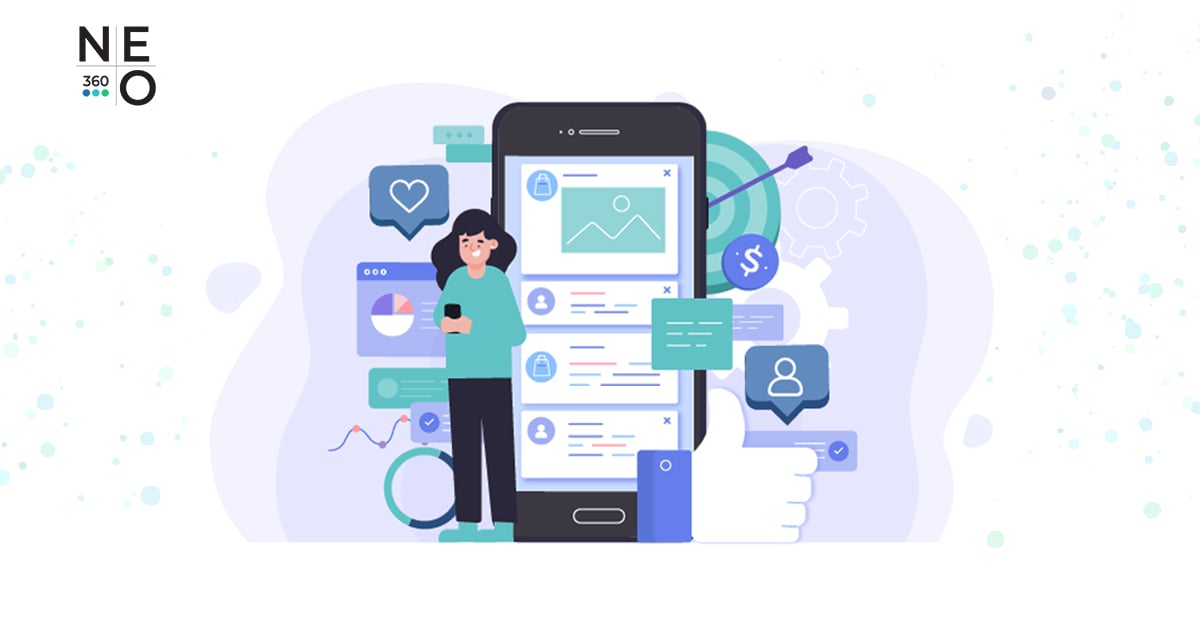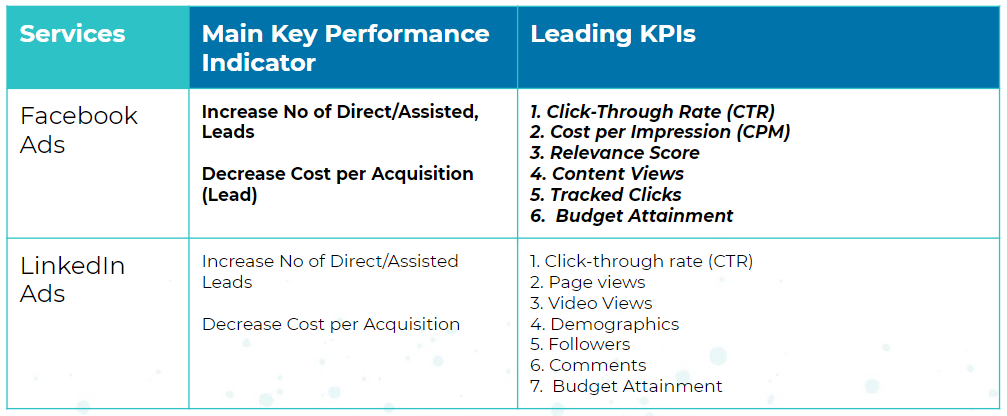16 Metrics for Medical Practices to Measure Social Media Performance

How come So-and-So Clinic’s posts has so many likes?
Why does Dr So-and-so have so many followers?
I’m lucky if my clinic gets one like!
If this sounds like you, you’ll be glad to know that likes and followers aren’t the be-all, end-all gauge of social media performance. Let’s take a closer look at a total of 16 metrics you should really be keeping an eye on when measuring your social media performance.
But first, set your objectives.
Just like any business, a medical practice generally uses social media “organically” (posting and conducting other activities for free), and for putting out paid ads. To get a 360 view of how well a clinic’s social media is performing, you’ll have to take both uses into account.
But before you even begin to use social media either way for your practice, you must first set objectives, or what exactly you want to achieve with your profiles and ads. Once you know what your objectives are, you can assess your social media performance according to how well your posts and ads were able to meet these objectives.
As an offhand example, let’s say a certain’s clinic’s objective for social media was to increase the number of appointments being made over a certain period of time. The clinic managed to rack up some 10,000 followers during that period, but hardly any of them actually ended up making an appointment. You might therefore say its social media wasn’t performing so well.
Your social media objectives must naturally be aligned with your overall digital marketing strategy, which should in turn be aligned with the marketing goals of your medical practice.
Here are some examples of objectives you might have for your practice as given by Health Care Social Media:
- Attract more patients
- Provide quality healthcare information
- Drive traffic to your website
- Enhance disease awareness
- Build your online authority and credibility
You can find ways in which Facebook and Instagram in particular can help you find more patients, here. But while both organic and paid social media may be used to reach these objectives, one or the other may be more effective for certain objectives, especially when a certain timeframe is involved.
Objectives such as driving traffic or increasing enquiries or appointments, for instance, might be better achieved with paid social media.
Now let’s get to the different ways of measuring your social media performance.
8 Metrics for Measuring Organic Social Media Performance
If your objectives involve creating awareness, increasing engagement, or cultivating future advocates for your medical practice with your organic posts and activities, these are the metrics you’ll want to watch. You’ll find most of these metrics in the insights of your social media accounts or by using social media listening tools.
1. Comments. Watch this metric with a discerning eye: it might be better to have one substantial, sincere positive comment than several one or two-word comments, e.g. “Cool!” “Wow!” or “That’s nice.”
2. Engagements. This number reflects how many times people have liked, shared, clicked or commented on your posts, which in turn reflects how people find your posts useful or relevant. You can find tips to increase engagement for your medical practice, here.
3. Impressions. This will tell you many times your content is displayed in a person’s feed or timeline. Note that this is not the same as Reach. It’s possible for one post to have more than one impression in the feed of just one person.
4. Likes. Note that Instagram has removed public like counts for users in some areas—only you will still be able to see how many people liked your content if you're logged in. All the same, you can find advice for getting more likes on Instagram, here. Also note how a high number of likes doesn’t necessarily translate into engagement.

5. Mentions. This number tells you how many times your practice was mentioned (e.g. @yourclinic) organically (i.e. not in a reply or Instagram story), which in turn tells you how aware people are of your practice.
6. Reach. Unlike Impressions, this is how many people have seen your content. Note that Facebook has limited the reach of the organic content a business publishes, meaning that their posts will most likely be seen by only 5.5% of their followers.
7. Share of Voice. This is a metric that tells you how much of an online foothold your practice has in its field. If you’re a dermatologist, for instance, you would be able tell how many people are talking about you on social media versus all the other dermatologists in your area.
8. Shares. This is the number of shares, retweets or regrams which are a great way to get your content in front of more people. You can find tips to increase your social media shares, here.
8 Metrics for Measuring Paid Social Media Performance

There are many different ways to pay for more people to see your content or increase the chances of their taking a specific action such as visiting your website or filling out a form.
As Facebook is one of, if not the social media advertising platform of choice, allow us to share the 8 Key Performance Indicators, or metrics which a business values most—that we use for Facebook Ads. Two of them are what we call the Main Key Performance Indicators, while the others are Leading KPI's.
The two Main Key KPI's are, by far, the most important to clients:
1. An Increase in the Number of Direct or Assisted Leads or in Sales Revenue. For lead generation, this could refer to an increase in the number or direct or assisted "sign ups", "form registrations" or "enquiries", depending on how a lead is defined.
A "direct lead" is someone who, after first seeing an ad on Facebook, signs up or buy directly. An "assisted lead" is someone who, after not buying upon seeing a Facebook ad, uses Google to search for the product in the ad—Facebook is able to this track this conversion and count it as an assisted lead or purchase.
Depending on how you set up your attribution (which is marketing-speak for figuring out how a customer found you), an assisted lead has 28 days to be counted as such.
2. A Decrease in Cost Per Acquisition for a Lead or a Purchase. This means that the lower it costs for someone to perform a "form registration", "sign up" or "enquire" (depending, again, on how you define a lead), the better. You'll want to lower this cost as much as possible.
While your clinic's website may not be set up as an e-commerce site, it might be useful to know how e-commerce sites will want to lower their cost per purchase to boost profits.
For lead generation, which is more likely to be relevant to you, the benchmark for the lowest possible cost per lead will depend on the service you offer, or the specialty you're in.
Now, the six Leading KPI's are indicative of the two main KPI's, in that if the numbers are good here, you can expect your two main KPI's to be good, too. These eight KPI's are the numbers to watch, when it comes time to decide whether you want to pause or keep running an ad campaign.
1. Click-Through Rate. Also known as CTR, this metric measures how often someone has clicked on your ad, and is calculated by dividing the number of clicks by the number of impressions.
2. Cost Per Impression. Also known as CPM (Cost Per Mille), this is the average cost of a thousand impressions, which is calculated by dividing the total amount you spent on your ads by the number of impressions, and multiplying that by 1,000. Note that the lowest possible CPM isn't always ideal, as ad quality and success should be prioritised.
3. Relevance Score. This is how Facebook scores, on a scale of 1 to 10, how much positive and negative feedback it expects an ad to generate—the highest score of 10 being given to an ad with the most positive expected feedback. Also note that a high relevance score can lower CPM.
4. Content Views. This is the number of times someone viewed your content, which is tracked by a Facebook pixel, or a little bit of code which you place on your website to track the people who visit it.
5. Tracked Clicks. There are multiple places for people to click on an ad, and this metric will tell you how many times and where they clicked—be it on the image, the call-to-action button, a URL or full-screen format.
6. Budget Attainment. As with any marketing budget, it’s essential to make sure that you don’t overspend or underspend your budget allocation for Facebook ads, to make sure in turn that you make the most out of your ad budget.
Note that metrics may differ between social media platforms—here, for instance are the KPI’s we use for LinkedIn ads:
- Click-Through Rate
- Page Views
- Video Views
- Demographics
- Followers
- Comments
- Budget Attainment
Help is at hand for measuring and making things better.
Even with the insights that come with social media platforms and all the readily available tools for creating content, scheduling, and tracking, keeping tabs on your social media performance can be a real handful. This is especially true when you factor in everything you have to do while managing a medical practice, especially during this challenging time.
The good news is that help is available for busy doctors and managers of a medical practice for making the most out of their social media presence. Talk to a 360 digital marketing agency with an extensively trained, certified and experienced team of social media marketers who have helped medical practices just like yours to use social media for their continuing growth.
About the Author
Managing Director
A Mechanical Engineer by training who graduated from the Nanyang Technological University. With over 15 years of experience working in Start-Ups, SMEs and MNCs, he has driven sales revenue and leads across the Asia Pacific region. Shei Wah was one of the SEO Speakers at the first Search Engine Strategies Conference 2011 held in Singapore. As Managing Director, he aims to establish NEO360 in all of the world’s major cities. Even as he works toward this goal, Shei Wah also dreams of his children’s future happiness, and unwinds by doing calisthenics with his former school buddies three times a week.




